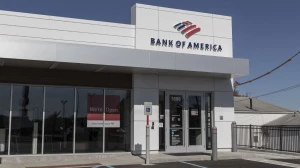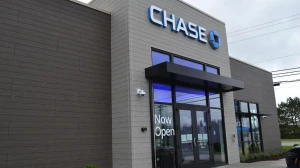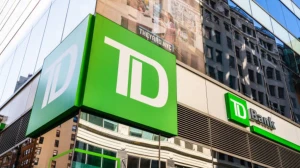
What is a Bank Draft and How Does It Work?
A bank draft is a secure payment method guaranteed by the issuing bank, often used for significant transactions to ensure payment reliability.
by Kowsalya
Published Sep 06, 2023 | Updated Sep 06, 2023 | 📖 10 min read
On This Page
- What is a Bank Draft?
- How Does Bank Draft Work?
- How to Get a Bank Draft?
- How to Cancel a Bank Draft?
- How Much Does a Bank Draft Cost?
- What is the Difference Between a Bank Draft and a Certified Check?
- When to Use a Bank Draft?
- What Are the Pros and Cons of a Bank Draft?
- What Are the Alternatives to Bank Drafts?
What is a Bank Draft?
A bank draft is a secure payment method guaranteed by the issuing bank. It is commonly used for significant transactions, such as real estate down payments, when a payee requires assurance of payment.
When a bank draft is requested, the issuing bank verifies and withdraws the necessary funds from the payer's account, depositing them into an internal or reserve account. This process ensures that the funds are readily available when the bank draft is cashed by the payee.
Banks typically charge a fee for providing this service. Bank drafts offer a higher level of security compared to personal checks, making them a preferred choice when parties involved have no prior relationship.
How Does Bank Draft Work?
A bank draft is a secure payment method that functions similarly to a check but comes with a guarantee from the issuing bank. Here's a detailed explanation of how a bank draft works:
- Requesting a Bank Draft: To obtain a bank draft, a customer typically visits their bank and requests one. This request can be made for various reasons, such as making a significant payment, a down payment on a property purchase, or when a seller demands a secure form of payment.
- Verification of Funds: Before issuing the bank draft, the bank verifies that the requesting customer has sufficient funds in their account to cover the requested amount. The bank ensures that the customer's account balance is enough to guarantee the payment.
- Withdrawal of Funds: Once the bank confirms the availability of funds, it withdraws the specified amount from the customer's account. This ensures that the funds are immediately set aside for the draft.
- Reserved Funds: The withdrawn funds are placed in the bank's internal account, often referred to as a reserve account. These funds are earmarked for the bank draft and are no longer accessible to the customer.
- Draft Preparation: With the funds secured, the bank prepares the bank draft. The draft includes essential information, such as the name of the payee (the person or entity receiving the payment), the exact amount to be paid, and any other necessary details. Bank drafts often have security features like serial numbers, watermarks, and micro-encoding to prevent fraud.
- Issuance to Customer: Once the bank draft is prepared, it is given to the customer. The customer can then use the bank draft as a secure form of payment, much like a certified check.
- Payment to Payee: When the payee receives the bank draft, they can deposit or cash it at their own bank. The bank draft is considered a guaranteed form of payment because the funds are already held by the issuing bank, making it more secure than personal checks.
- Fees: Banks typically charge a fee for issuing bank drafts. This fee can be a flat rate based on the total amount of the draft or a percentage of the draft's value. However, some banks may waive this fee for certain customers, such as those with a strong banking relationship or high-net-worth individuals.
- Cancellation or Replacement: It may be possible to cancel or replace a lost, stolen, or destroyed bank draft, but this process usually requires proper documentation and may involve redeeming the draft for the full amount.
How to Get a Bank Draft?
Getting a bank draft is a straightforward process. Here are the steps to obtain one:
- Visit Your Financial Institution:
- Go to your bank or credit union where you hold an account.
- Verify Your Identity:
- Approach a bank teller or representative who will assist you with the process.
- You may need to provide identification to verify your identity, such as a government-issued ID or driver's license.
- Place a Request:
- Inform the bank teller that you would like to obtain a bank draft.
- Specify the amount you want the draft to be for.
- Withdraw Funds:
- The bank will withdraw the specified amount from your account.
- Ensure you have sufficient funds in your account to cover the draft's amount, including any fees that may apply.
- Transfer to Bank's Account:
- The bank will transfer the withdrawn funds to one of its own accounts, separate from your personal account.
- Draft Preparation:
- Once the funds are secured in the bank's account, they will prepare the bank draft for you.
- Receive the Bank Draft:
- The bank teller will hand over the bank draft to you.
- Secure the Draft:
- Exercise caution when leaving the bank with the bank draft, as it represents a significant sum of money.
- Keep it in a safe place to prevent theft or loss.
Remember that bank drafts are a secure form of payment commonly used for substantial transactions. They are particularly valuable for significant purchases, such as making a down payment on a house, buying a car from a dealer, conducting transactions through a notary, or making major overseas purchases like buying a car, boat, artwork, or jewelry. Bank drafts do not have an expiration date, but it's advisable not to obtain them too far in advance, especially when dealing with overseas transactions.
How to Cancel a Bank Draft?
Canceling a bank draft can be a bit tricky, as it's a secure payment method once issued. Here's how the process generally works:
- No Stop Payments: Many banks do not allow stop payments on bank drafts once they have been issued. This is because the funds have already been set aside for the draft, and the transaction is considered complete according to their records.
- Redemption: If you need to cancel a bank draft, the usual procedure involves redeeming the draft for the full amount. This means you have to take the bank draft back to the issuing bank and ask them to reverse the transaction.
- Documentation: To cancel or replace a bank draft, you typically need to provide the bank with the necessary documentation. This may include a written request explaining the reason for cancellation, proof of identity, and details about the original bank draft, such as the draft number and the payee's name.
- Possible Exceptions: In some cases, banks may allow cancellation or replacement of a bank draft, especially if it has been lost, stolen, or destroyed. However, these situations often require thorough documentation to prove the circumstances.
It's important to note that the ability to cancel a bank draft and the specific requirements for doing so may vary from one bank to another. Additionally, some banks may charge a fee for canceling or replacing a bank draft, so it's advisable to check with your bank for their specific policies and procedures regarding bank draft cancellations.
Overall, while canceling a bank draft is possible in some cases, it's not as straightforward as canceling a personal check, and it often involves a more formal process with documentation and bank cooperation.
How Much Does a Bank Draft Cost?
The cost of a bank draft can vary depending on the financial institution where you obtain it. Here's a brief explanation:
Bank Draft Cost: The price of a bank draft is not standardized and may differ from one bank to another. Typically, financial institutions charge a fee for issuing a bank draft. This fee can be structured in two main ways:
- Flat Fee: Some banks charge a fixed, flat fee for issuing a bank draft. For example, TD Bank may charge $9.95 for a bank draft.
- Percentage of the Draft Amount: In some cases, the bank may calculate the fee as a percentage of the total amount of the bank draft. This means that the cost of the bank draft will increase with the higher value of the draft.
What is the Difference Between a Bank Draft and a Certified Check?
The main difference between a bank draft and a certified check lies in how they guarantee funds:
Bank Draft:
- Funds for a bank draft are immediately withdrawn from the payer's bank account when the draft is issued.
- The bank itself guarantees the payment on the draft.
- The payer's funds are placed into the bank's reserve account.
- It is considered a secure form of payment because the funds are already set aside.
Certified Check:
- With a certified check, the payer's funds are not withdrawn from their bank account until the check is cashed.
- The bank certifies that the funds are available but doesn't set them aside.
- Instead of immediate withdrawal, the payer's funds are placed on hold.
- The bank guarantees the payment once the check is presented for cashing.
When to Use a Bank Draft?
You might consider using a bank draft in the following situations:
- Large Purchases: Bank drafts are ideal when customers or clients are making significant purchases, such as buying a car, real estate property, or other high-value assets. They provide security and assurance of payment for both parties involved in the transaction.
- High-Value Sales: If your business involves selling products or services with substantial price tags, especially when dealing with new or unfamiliar customers, requesting payment via a bank draft can mitigate the risk of payment issues and ensure a smooth transaction.
- International Transactions: Bank drafts can be issued in various foreign currencies, making them a secure and convenient option for international trade or transactions involving foreign parties.
- Privacy and Security: Bank drafts allow customers to make payments without disclosing sensitive bank account information, enhancing privacy and security for both payers and payees.
- Risk Mitigation: Using bank drafts can help prevent the challenges associated with bounced checks, as the funds are guaranteed by the issuing bank, reducing the risk of payment disputes or insufficient funds.
- Complex Payment Scenarios: In situations where other payment methods may be inconvenient or challenging, such as when a buyer needs to make a substantial down payment quickly, bank drafts offer a straightforward and secure solution.
Overall, bank drafts are a valuable payment tool in scenarios involving substantial, secure, and sometimes intricate financial transactions. They provide peace of mind and ensure a reliable payment process for all parties involved.
What Are the Pros and Cons of a Bank Draft?
Pros of a Bank Draft:
- Bank drafts are backed by trusted financial institutions, ensuring that the payment is secure and will not bounce due to insufficient funds.
- Bank drafts have no maximum limit on the amount, making them suitable for high-value transactions.
- Bank drafts can be issued in various foreign currencies, facilitating international transactions.
Cons of a Bank Draft:
- The person making the payment may be responsible for paying additional fees imposed by the issuing bank for obtaining a bank draft.
- Bank drafts are physical documents that can be lost, damaged, or stolen, requiring careful handling and delivery.
- The process of obtaining a bank draft can be time-consuming compared to electronic payment methods, potentially slowing down transactions.
What Are the Alternatives to Bank Drafts?
Alternatives to Bank Drafts:
Wire Transfer:
- Wire transfers enable you to transfer money from one bank account to another. You'll need the recipient's bank details for the transfer.
- Additional fees may apply, especially when transferring funds between different financial institutions.
Money Transfer Apps:
- Various personal finance apps allow users to send money quickly and securely to others.
- Fees may be charged depending on the app and the type of service used. Some apps may have limits on transfers or may hold funds for large transfers.
ACH Payments (Automated Clearing House):
- ACH payments facilitate fund transfers between financial institutions. The Automated Clearing House network supports transfers between nearly any bank or credit union, provided you have the recipient's financial information.
While bank drafts offer security and reliability, these alternatives provide more convenient and electronic means of transferring money. Consider the specific needs of your transaction and your preference for electronic or paper-based payments when choosing the right option for your situation.
What is a Bank Draft-FAQs
1. What is a Bank Draft?
A bank draft is a secure payment method guaranteed by the issuing bank.
2. Can anyone obtain a bank draft, or do you need a bank account?
Generally, you need to have a bank account with the issuing financial institution to obtain a bank draft.
3. Are bank drafts secure for international transactions?
Yes, bank drafts are often used for international transactions because they can be issued in various foreign currencies.
4. Can a bank draft be canceled or replaced if lost or stolen?
Canceling or replacing a bank draft can be challenging. Many banks do not allow stop payments on bank drafts once issued.
5. How long does it take for the funds from a bank draft to be available to the payee after depositing it?
The availability of funds from a bank draft can vary depending on the bank's policies.




